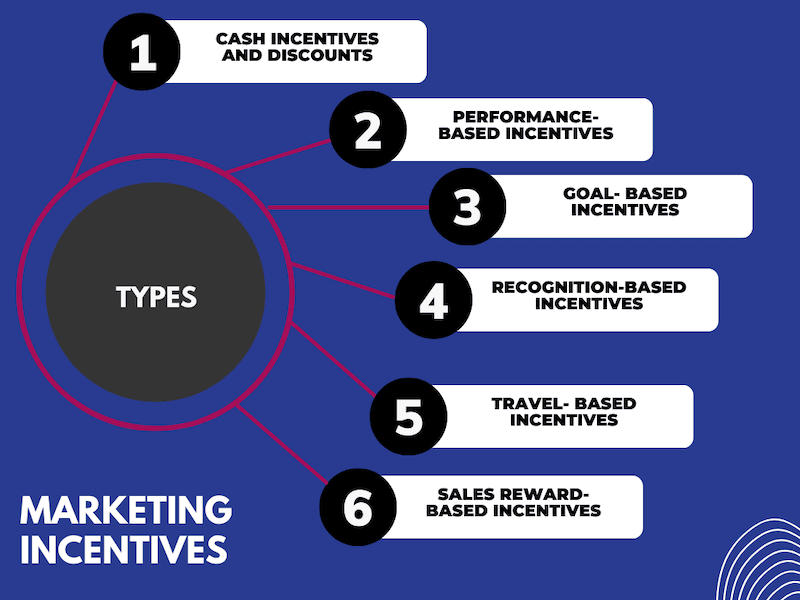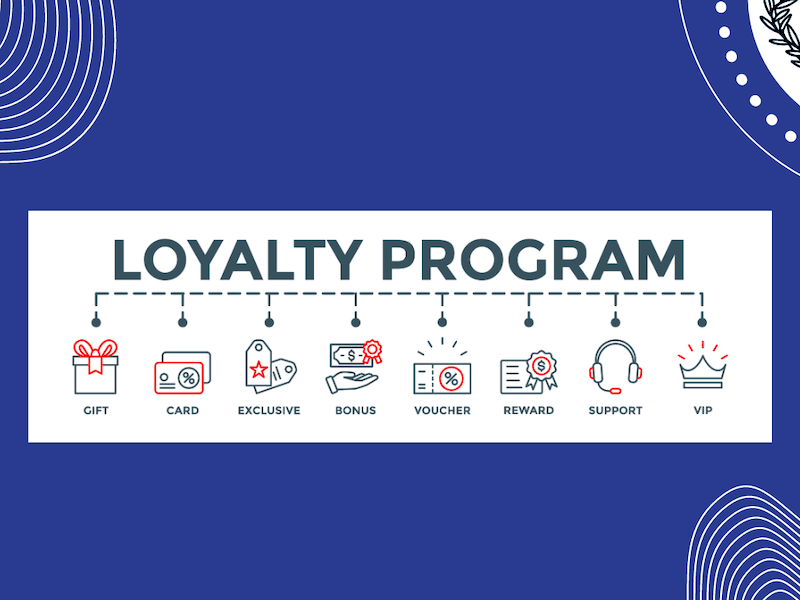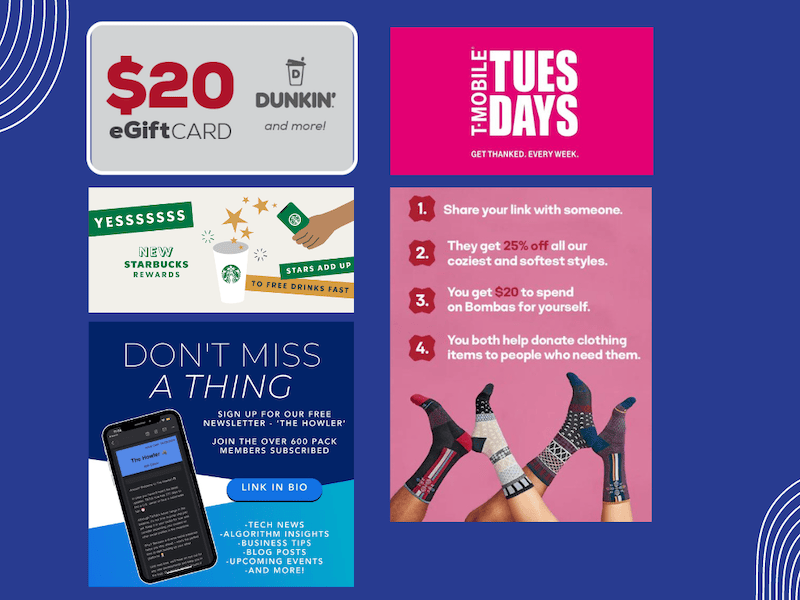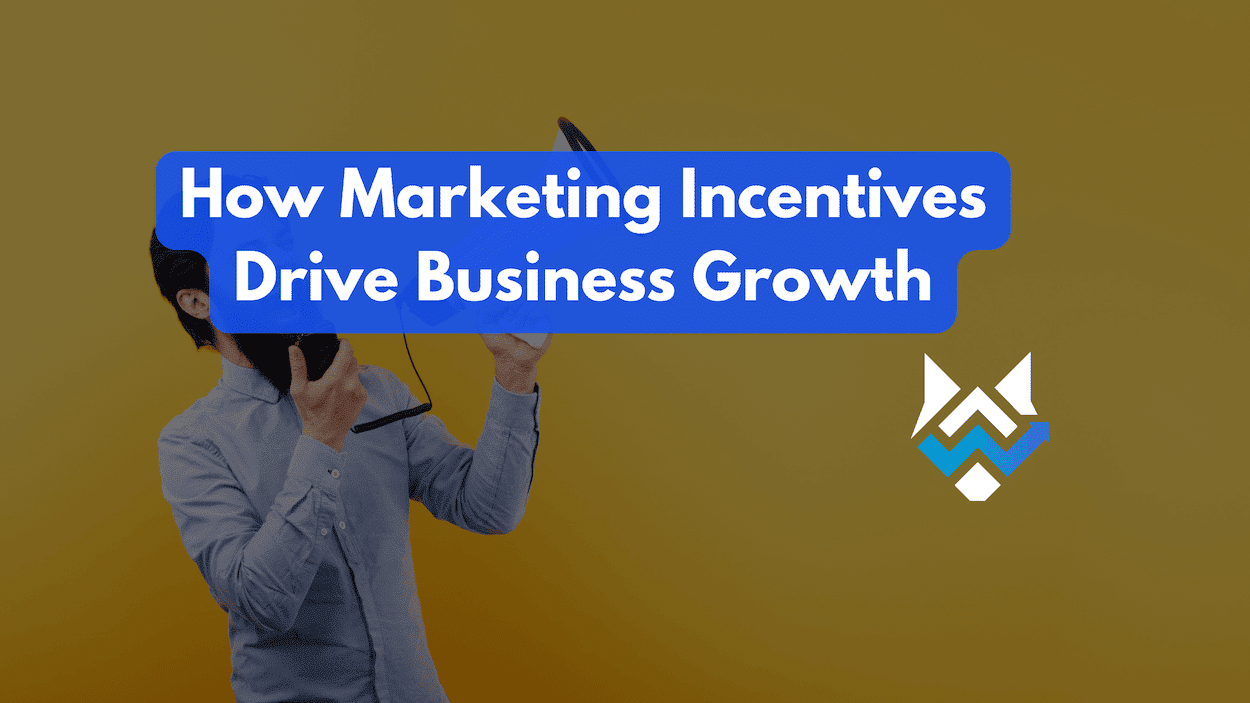Marketing incentives are a powerful tool that can drive significant business growth by motivating both employees and customers to take specific actions. Whether your focus is on building employee loyalty, gaining more customers, or driving sales, incorporating marketing incentives into your strategy can lead to remarkable results.
In this guide, we’ll explore various types of marketing incentives, how they work, and real-world examples of successful incentive programs.
Understanding Marketing Incentives
Incentive marketing is a powerful strategy that leverages rewards to motivate and encourage specific behaviors from customers or employees. By offering something of value, businesses can influence actions that contribute to their overall goals, such as increasing sales, enhancing customer loyalty, or boosting employee performance.
Types of Marketing Incentives

Cash Incentives and Discounts
- Cash incentives, such as rebates or immediate discounts at the point of sale, provide a direct monetary benefit to customers, encouraging purchases by reducing the overall cost. Studies show that 75% of consumers are more likely to make a purchase if they are offered a discount or cash incentive.
Performance-based Incentives
- Performance-based incentives are tied to measurable outcomes or achievements. For example, employees may receive bonuses for surpassing sales targets, incentivizing them to work harder and smarter. Research indicates that companies using performance-based incentives experience a 44% increase in employee productivity.
Goal-based Incentives
- Goal-based incentives reward individuals or teams for reaching specific objectives within a set timeframe, aligning personal ambitions with company goals.
Recognition-based Incentives
- Acknowledging an individual’s contributions can be a powerful motivator. Public recognition, awards, or even a simple thank-you note can make employees feel valued and appreciated. According to Gallup, employees who receive regular recognition are 5 times more likely to stay with their employer. Furthermore, companies with effective recognition programs experience a 31% reduction in voluntary turnover.
Travel-based Incentives
- Offering travel as a reward for exceptional performance can create memorable experiences that foster loyalty and motivation. A study by the Incentive Research Foundation found that 96% of employees who receive travel incentives are more motivated to achieve their goals. Moreover, companies that offer travel incentives see a 22% increase in sales productivity.
Sales Reward-based Incentives
- These focus on driving sales volume by providing rewards such as commissions, prizes, or exclusive access to new products for top-performing salespeople.
Incorporating these types of marketing incentives can significantly enhance employee motivation and customer engagement, leading to substantial business growth and success.
How Marketing Incentives Motivate People
Incentives play a crucial role in marketing by creating positive associations with a brand, driving customer engagement, and encouraging repeat business. They also help in differentiating a company from its competitors and adding value to the customer experience.
By offering something extra, businesses can make their customers feel appreciated, leading to increased loyalty and higher customer satisfaction. Moreover, incentives can spur word-of-mouth marketing as satisfied customers are more likely to share their positive experiences with others. This ripple effect not only strengthens the brand’s reputation but also attracts new customers.
Marketing Incentive Ideas

Implementing effective incentive marketing strategies requires a clear understanding of your target audience and their motivations. Here are some practical ideas for creating successful marketing incentives:
Loyalty Programs
- Encourage repeat purchases by rewarding customers for their loyalty. For example, a coffee shop might offer a free beverage after every ten purchases. This not only incentivizes customers to return but also helps build a loyal customer base. According to research, loyalty programs can increase customer retention by 5-10%.
Referral Bonuses
- Motivate current customers to refer friends and family by offering rewards for successful referrals. This could be in the form of discounts, gift cards, or free products. Referral programs are highly effective because people trust recommendations from friends and family. Data shows that referred customers have a 37% higher retention rate compared to other customers.
Premium Memberships
- Offer enhanced services or benefits to premium members. This could include faster shipping, exclusive access to products, or personalized customer service. Premium memberships create a sense of exclusivity and can significantly increase customer loyalty and spending. For instance, Amazon Prime members spend an average of $1,400 per year compared to $600 for non-Prime members.
Special Pricing
- Provide exclusive discounts to certain customer segments, such as students, veterans, or long-term customers. Special pricing can attract new customers and make them feel valued. For example, a software company might offer a discounted rate for educational institutions, encouraging adoption among students and teachers.
Early Access
- Give loyal customers first dibs on new products or services. This can create a sense of urgency and excitement, driving sales and engagement. For example, a fashion brand might offer early access to a new clothing line to its most loyal customers, generating buzz and anticipation before the official launch.
Sweepstakes
- Engage customers with the chance to win prizes through contests. This can be a fun and interactive way to boost engagement and attract new customers. For instance, a beauty brand might run a social media contest where participants can win a year’s supply of products by sharing their favorite looks. Such contests can significantly increase brand visibility and customer interaction.
Incorporating Marketing Incentives into Your Strategy
To effectively integrate marketing incentives into your business strategy, follow these steps:
Define Clear Goals and Desired Actions
- Start by identifying what you want to achieve with your incentive program. Are you looking to increase sales, boost customer loyalty, improve employee performance, or attract new customers? Once you have a clear goal, determine the specific actions you want participants to take. For instance, if your goal is to increase sales, the desired action might be for customers to purchase a certain product or spend a minimum amount.
Choose Appropriate Incentives for Your Audience
- Select incentives that will appeal to your target audience and motivate them to take the desired actions. Consider your audience’s preferences, needs, and behaviors. For example, if your audience values savings, offering discounts or cash-back rewards might be effective. If they seek unique experiences, travel-based incentives or exclusive events could be more appealing.
Communicate the Program Clearly to Participants
- Effective communication is crucial for the success of your incentive program. Ensure that participants understand how the program works, what actions are required, and what rewards they can earn. Use multiple channels to communicate the program, such as email, social media, in-store signage, and your website. Provide clear and concise information, and consider creating a FAQ section to address common questions.
Monitor and Adjust the Program as Needed
- Once your incentive program is up and running, continuously monitor its performance to ensure it meets your goals. Track key metrics such as participation rates, sales increases, customer feedback, and overall ROI. Use this data to identify areas for improvement and make necessary adjustments. For example, if you notice low participation, consider offering additional incentives or simplifying the program requirements.
By following these steps, you can effectively incorporate marketing incentives into your business strategy, enhancing customer engagement, boosting sales, and achieving your overall business goals.
Successful Marketing Incentive Examples

Here are real-world examples of successful incentive programs from notable brands, highlighting their strategies and the impact on their business:
Dunkin’ Donuts and Starbucks
- Both Dunkin’ Donuts and Starbucks have implemented highly effective loyalty programs. These programs reward customers with free beverages after a certain number of purchases, creating a strong incentive for repeat visits. For example, Starbucks’ Rewards program allows customers to earn “Stars” for each purchase, which can be redeemed for free drinks, food items, and merchandise. This not only boosts customer loyalty but also increases the frequency of purchases. Dunkin’s DD Perks program offers similar benefits, encouraging customers to keep returning for their coffee and snacks.
Amazon Prime
- Amazon Prime offers a suite of benefits, including free two-day shipping, access to exclusive content on Prime Video, music streaming, and more. This comprehensive membership program has significantly increased customer retention and loyalty. Prime members tend to shop more frequently and spend more per transaction compared to non-members. The perceived value of the membership keeps customers engaged and loyal to Amazon, contributing to its massive market share in e-commerce.
T-Mobile Tuesdays
- T-Mobile Tuesdays is a loyalty program that rewards T-Mobile customers with weekly deals and freebies through the T-Mobile Tuesdays app. Offers include discounts on popular brands, free movie rentals, and even free meals. This program enhances customer satisfaction and loyalty by providing ongoing value and rewards, making customers feel appreciated and special. The consistent delivery of perks helps retain customers and differentiates T-Mobile from its competitors.
Bombas Referral Program
- Bombas, a sock and apparel company, has a referral program that incentivizes customers to refer friends by offering discounts to both the referrer and the referred. For instance, when a customer refers a friend who makes a purchase, the referrer receives a $20 discount, and the friend gets 25% off their first order. This program helps expand Bombas’ customer base by leveraging the power of word-of-mouth marketing. The dual-sided rewards ensure that both parties benefit, making it a win-win situation.
WolfPack Advising’s “Refer a Friend” Program
- WolfPack Advising’s “Refer a Friend” program is a stellar example of a successful marketing incentive. This program rewards participants with a $100 gift card for each successful referral that results in a new client signing up for WolfPack Advising’s services. The process is straightforward: referrers simply ensure their friends enter their name and contact information in the referral section of the proposal form. This incentivizes current clients to share their positive experiences and brings in high-quality leads through trusted recommendations.
Conclusion
By utilizing these techniques and real-world examples, this blog provides a comprehensive guide to understanding and implementing effective marketing incentives. The use of engaging language, clear organization, actionable advice, supporting statistics, and visual descriptions helps readers grasp the concepts and encourages them to apply these strategies to achieve their business objectives.
Contact Wolfpack Advising today for expert guidance! Visit Wolfpack Advising and take the first step towards a more impactful online presence!




